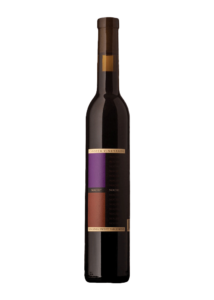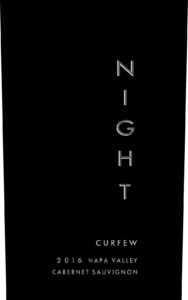The USPTO Trademark Trial and Appeals Board (“TTAB”) recently issued two relevant decisions to the wine industry. The decisions are summarized below.
In re En Primeur Wines, Inc., Serial No. 87170488 (July 18, 2018) [not precedential]: En Primeur Wines, Inc. (“Applicant”) sought registration on the Principal Register of the mark MY EN PRIMEUR (in standard characters, with EN PRIMEUR disclaimed) for “on-line retail store services featuring wine” in International Class 35. Id. at 1. The Trademark Examining Attorney (“EA”) originally refused registration of the mark under Section 2(d) of the Trademark Act, 15 U.S.C. § 1052(d) on the ground that Applicant’s mark resembled EN PRIMEUR WINERY SERIES (in standard characters with WINERY SERIES disclaimed) and EN PRIMEUR WINERY SERIES (design with EN PRIMEUR WINERY SERIES disclaimed) for “Kits for making wine at home” in International Class 33. Id. at 2. The EA stated that Applicant’s mark was likely to cause confused, mistake, or deception. Applicant appealed EA’s final refusal. The Board based its decision on Registration No. 5189063 (for standard characters), as the Board said it was more similar to Applicant’s mark.
In regard to similarity and dissimilarity of the marks analysis, Applicant argued that EA did not give proper weight to the word “MY” in Applicant’s mark. Applicant further argued that the registered mark was entitled only to a narrow scope of production because “EN PRIMEUR” was descriptive and the entirety of the phrase on the registered mark was descriptive and weak. Applicant further argued that the marks sound and look different, have different meanings, and create a different commercial impression. Overall, Applicant argued that the EA focused too much on the shared term between Applicant’s mark and the registered mark. The Board agreed with the findings of the EA, reasoning that similarity or dissimilarity is based on the marks in their entireties and not on dissecting marks into components; that being said, the Board reasoned that it was not improper to state that more or less weight is given to a particular feature of a mark as long as the ultimate conclusion rests on the entireties of the marks. Id. at 5–6. Applicant submitted a significant amount of evidence to argue that EN PRIMEUR is a weak mark when used in connection with wine; the Board agreed that EN PRIMEUR was “somewhat conceptually weak” when used with wine or related services but did not agree that the term was descriptive. Id. at 8. Instead, the Board explained that the EN PRIMEUR is used more as a term of art in the French wine industry and by investors and wine merchants; the Board did not believe it would be a phrase that ordinary wine drinkers in the United States would be familiar with. Id. at 8–9.
Viewing Registrant’s mark as a whole, the Board found that the disclaimed phrase WINERY SERIES was less distinctive than EN PRIMEUR because it is descriptive of the goods. Id. at 9. Further, the placement of EN PRIMEUR at the beginning of the mark enhanced its prominence. With respect to Applicant’s mark, the Board found that the use of “MY” had less trademark significance than EN PRIMEUR and that EN PRIMEUR was the dominant element and that the placement of “MY” asserted the dominance of MY PRIMEUR. Id. at 10. Thus, the Board decided that EN PRIMEUR is entitled to more weight in the analysis of the two marks; without much discussion, the Board quickly resolved that the two marks were similar in appearance, sounds, and connotation due to the common presence of EN PRIMEUR. Id. at 11.
In its relatedness of goods and services and channels of trade analysis, the Board reasoned that, while the goods in the registration were not identical to Applicant’s services, this did not disclaim a finding of relatedness. Instead, the record showed that the goods and services were “commercially related.” Id. at 13 (based on significant evidence from EA indicating that one source can sell both wine and supplies for making wine at home under the same mark). The Board thus found the services identified in the application to be related to the goods in the registration, and that consumers would believe that the goods and services emanated from a common source. After a short discussion on the channels of trade, the Board affirmed the prior refusal to register Applicant’s mark under Section 2(d).
 In re Night Wines, LLC, Serial No. 87084959 (June 20, 2019) [not precedential]: Night Wines, LLC (“Applicant”) sought registration on the Principal Register of the standard character mark NIGHT for “wine” in International Class 33. The EA originally refused registration under Section 2(d) of the Trademark Act, 15 U.S.C. § 1052(d) on the ground of likelihood of confusion because Applicant’s mark is the English translation of a registered mark NOCHE (in standard characters) for wine. Id. at 1–2. Applicant appealed to the Board after EA denied a request for reconsideration; an oral hearing was held on May 2018.
In re Night Wines, LLC, Serial No. 87084959 (June 20, 2019) [not precedential]: Night Wines, LLC (“Applicant”) sought registration on the Principal Register of the standard character mark NIGHT for “wine” in International Class 33. The EA originally refused registration under Section 2(d) of the Trademark Act, 15 U.S.C. § 1052(d) on the ground of likelihood of confusion because Applicant’s mark is the English translation of a registered mark NOCHE (in standard characters) for wine. Id. at 1–2. Applicant appealed to the Board after EA denied a request for reconsideration; an oral hearing was held on May 2018.
The Board initially gave background on an evidentiary matter that surfaced during its request for reconsideration and appeal brief (detailed on Pages 2 through 5) before developing its likelihood of confusion analysis. In the latter, the Board first discussed the identity of the goods, their trade channels, and consumers. Without much (or any) discussion the Board quickly found that the goods were identical and thus presumed the channels of trade and classes of customers were the same.
With that quick finding, the Board then discussed the similarity of the marks, including the commonality of the letters “N” and “H.” From a sound perspective, the Board reasoned there “is no reason to believe the marks will sound alike when spoken.” Id. at 7. The EA argued that the Doctrine of Foreign Equivalents applied with respec t to connotation and commercial impression. Applicant argued that the registration for NIGHT should not be refused based solely on the translation from English to Spanish and reasoned that the Doctrine of Foreign Equivalents is limited to meaning only. Id. The Board agreed that the Doctrine applied and that ordinary purchasers of wine would understand that NIGHT translates to NOCHE (and vice versa). Id. at 8.
t to connotation and commercial impression. Applicant argued that the registration for NIGHT should not be refused based solely on the translation from English to Spanish and reasoned that the Doctrine of Foreign Equivalents is limited to meaning only. Id. The Board agreed that the Doctrine applied and that ordinary purchasers of wine would understand that NIGHT translates to NOCHE (and vice versa). Id. at 8.
The Board interestingly discussed one of the prior decisions cited by Applicant, which involved an applicant mark for TIA MARIA and a registrant mark of AUNT MARY’S; the Board in In re Night Wines, LLC reasoned that the prior decision took into account the context in which consumers would encounter the marks as well as their connections to the goods and services. The Board reasoned that the case at hand differed, as it must consider that consumers will be encountering the marks on the same exact goods (i.e., wine). For the above reasons, the Board found that the similarity of the marks based on the same meaning outweighed the differences in sound and appearance. Id. at 10.
Finally, Applicant pulled use of the term MIDNIGHT on wine by third parties (via TTB COLAs) and argued that it demonstrated the number and nature of similar marks, by which consumers were not confused. The Board disagreed and said that a COLA does not indicate third-party use of the marks in commerce, that MIDNIGHT has a different meaning, and that there was no compelling evidence to show that either NIGHT or NOCHE were weak.
Therefore, the Board found in favor of likelihood of confusion and affirmed the refusal to register Applicant’s mark.
For more information on wine law, alcohol law, or trademark law, please contact Lindsey Zahn.
DISCLAIMER: This blog post is for general information purposes only, is not intended to constitute legal advice, and no attorney-client relationship results. Please consult your own attorney for legal advice.
